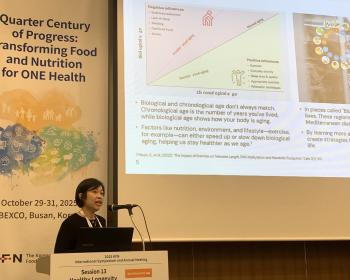Xanthomonas Blocks Influenza Type A and B...Prevention of infection when administered in combination with camostat ↑
Apr 16, 2025
|
During the change of seasons, when the daily temperature difference is increasing, immunity weakens, leading to a surge in infections of various respiratory viruses, including influenza A and B. Vaccination and mask wearing are recommended to prevent infection. In addition, demand for various infection prevention methods is also increasing.
Daewoong Pharmaceutical announced on the 16th that it has confirmed the effect of preventing viral infection when combining 'Xanthomonas fermented extract (hereinafter referred to as Xanthomonas)' and 'Camostat', a major component of nasal spray Nose Guard developed to protect the nasal mucosa.
The results of the study, which was recently published in the global viral journal Viruses, were titled 'Synergistic Antiviral Activity of Xanthan Gum and Camostat Against Influenza Virus Infection'.
The study, which was jointly conducted by Daewoong Pharmaceutical Co., Professor Kim Min-soo of Pusan National University's College of Pharmacy, and Professor Kim Seok-ho of the Department of Autonomous Major at the National Military University, an expert in immunization and infection research, lasted a total of 18 months. It was conducted in a manner similar to nasal epithelial cells and animal experiments on mice and Madin-Darby canine kidney (MDCK), which has characteristics similar to those of nasal epithelial cells and is widely used in evaluating influenza virus infection.
As a result of the study, using both ingredients together exhibited 'strong antiviral effect' even at low doses. In addition, Xanthomonas components have been found to not only inhibit virus penetration, but also to reduce lung tissue damage and prevent weight loss.
In cell experiments, a higher antiviral effect was confirmed when 'camostat co-administration' was administered to canine kidney epithelial cells infected with influenza A and B virus than when Xanthomonas was administered alone.
In the experiment, a small number of infected epithelial cells were blocked from spreading to other epithelial cells, and the evaluation index was 'cell viability', which finally looked at how much the cells survived.
As a result, when Xanthomonas alone was administered, the cell survival rate was only 5%, but in the co-administered group, the cell survival rate was more than 70%. This is analyzed as a result of Xanthomonas blocking the physical penetration of the virus, and Camostat exerted a dual protective effect of inhibiting the intracellular invasion of the virus. In particular, this result is significant in that the concentration of Xanthomonas and camostat was also effective at a low concentration level of 0.1%.
In mouse animal experiments, the Xanthomonas alone showed 99% blocking intranasal influenza type A virus penetration compared to the drug-free group, and the lung tissue damage suppression rate reached 59%, demonstrating high antiviral effects. The rate of weight loss, a representative symptom of mouse infection, was less than 1%, the lowest compared to other polymeric substances compared together.
Professor Kim Seok-ho, the Corresponding author of the study, said, `The findings that Xanthomonas fermented extracts, which were mainly used in food, are effective in preventing infection by forming a physical membrane, suggest a meaningful possibility that this ingredient can block various viruses"Especially, Xanthomonas fermented extract and camostat combination will be economical and effective antiviral options as they can be highly effective even at low doses."
This article was translated by Naver AI translator.














